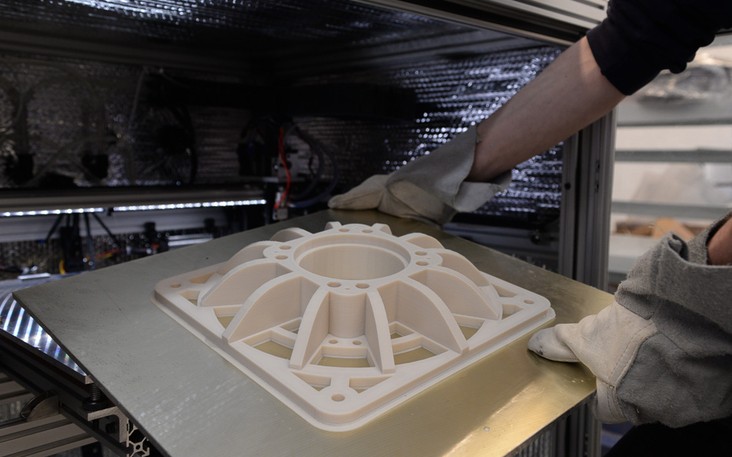
PEEK (Polyether Ether Ketone) is a high-performance engineering thermoplastic. After 3D printing (e.g., via FDM or SLS technologies), it often requires post-processing to enhance mechanical properties, surface quality, and functionality. Below are the most common post-processing methods for PEEK 3D-printed components.
Thermal treatment is essential for improving crystallinity and relieving internal stress, directly impacting heat resistance, strength, and dimensional stability.
Purpose:
Eliminates residual stress from printing to prevent deformation or cracking.
Improves crystallinity (from amorphous to semi-crystalline), enhancing thermal resistance and mechanical strength (e.g., tensile strength, modulus).
Process Parameters:
Temperature: Above PEEK’s glass transition (~143°C), typically 150–200°C. Avoid exceeding melting point (343°C).
Time: Varies with part thickness; typically 4–12 hours. Thicker parts require more time.
Cooling: Slow cooling (e.g., furnace cooling) to promote crystallization and avoid internal stress.
Equipment: Precision ovens with uniform heating.
Tips:
Heat gradually to prevent warping. Embedding parts in sand ensures uniform heating and shape stability.
Inert gas (e.g., nitrogen) can be used to prevent oxidation or yellowing.
Purpose: Eliminates internal porosity under high temperature and pressure, enhancing density and fatigue life.
Parameters:
Temperature: 200–300°C
Pressure: 50–200 MPa
Duration: Several hours
Applications: Aerospace, medical implants. Note: high equipment cost.
Due to common surface roughness or print layers, the following methods are used to enhance finish:
Methods:
Sanding: Use sandpaper from 400 to 2000 grit for simple parts.
Ultrasonic Polishing: Suspended abrasives polish complex geometries.
Drawback: Time-consuming and may damage fine details.
Solution: Concentrated sulfuric acid (98%) or acid blends (e.g., sulfuric + hydrogen peroxide) reduce surface roughness via mild dissolution.
Process: Dip for seconds to minutes—precise control needed to avoid over-corrosion.
Safety: Operate in a fume hood with corrosion-resistant gear. Neutralize and clean thoroughly after.
Techniques:
Plasma Spraying: Applies metal or ceramic coatings for wear resistance or biocompatibility.
PVD/CVD: Deposits nano-scale films for conductivity or antibacterial functions.
Applications:
Medical implants (e.g., titanium coating)
Electronics (e.g., conductive films)
Tools: Precision pliers, cutters, or solvent-dissolution for soluble supports.
Tip: Remove in layer direction to reduce breakage risk.
Methods:
Ultrasonic Cleaning: Use isopropanol or deionized water to remove unsintered powder (SLS).
Compressed Air: Clears debris from intricate geometries.
Purpose: Improve dimensional accuracy or add threads, holes, etc.
Parameters:
Tools: Carbide or diamond-coated bits.
Speed/Feed: High-speed, low-feed rate to reduce heat.
Cooling: Air cooling or minimal lubrication to avoid softening.
Method: Dry ice is accelerated by high-pressure gas to blast away burrs.
Advantages:
No physical contact—prevents surface damage or warping
Maintains high dimensional stability and wear resistance
PEEK is highly moisture-absorbent. Dry before and after processing at 120°C for 4–5 hours to eliminate moisture.
Standard Needs: Annealing + mechanical polishing
High-End Use: HIP + coating treatments
Post-processing of PEEK 3D-printed parts should be tailored to application needs:
Industrial parts: Annealing + machining for precision.
Medical implants: HIP + plasma coating + sterilization for biocompatibility.
Optical/electronic components: Chemical polishing + PVD coating for enhanced surface performance.
With optimized post-processing, the performance of 3D-printed PEEK parts can rival—or even surpass—traditional injection-molded products.